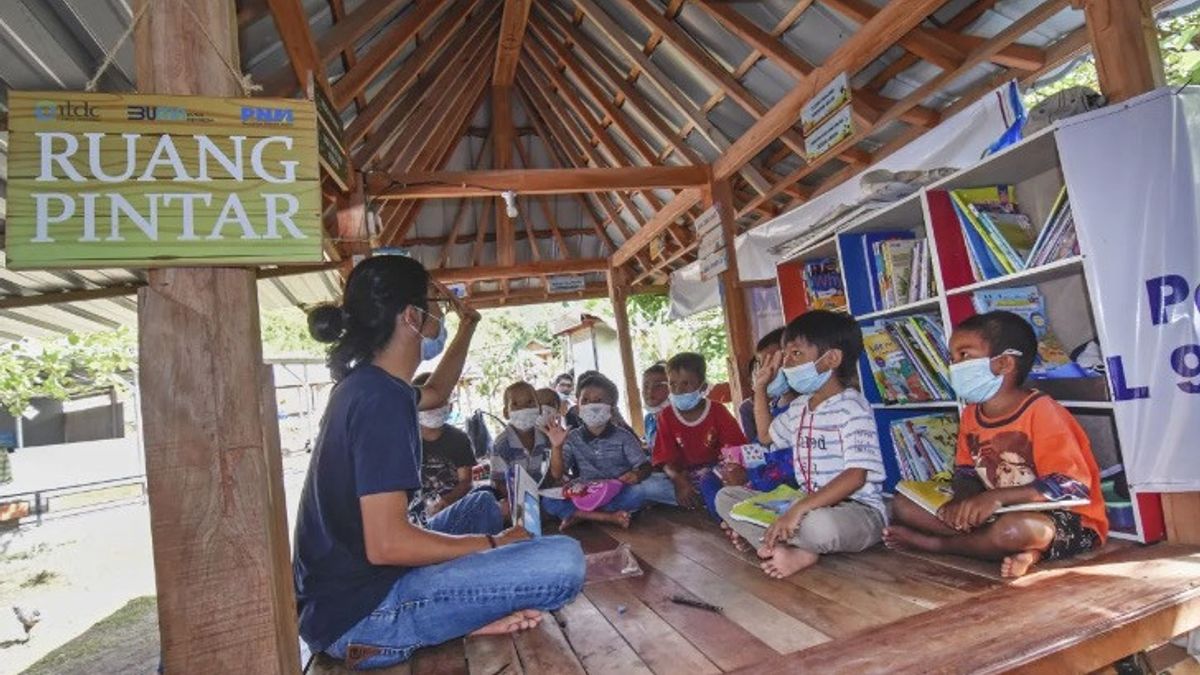JAKARTA The idea that teaching two languages can cause language confusion and even delays in speaking to children has long become a myth. In fact, teaching two languages from an early age provides many benefits for children.
Having children who are able to communicate with more than one language, or better known as bilingual, is the dream of all parents today. But not a few parents are still hesitant to apply bilinguals to their children.
On the one hand, introducing other languages other than mother tongue is believed to help children be more fluent in foreign languages. But on the other hand, the belief that teaching children two languages from an early age can cause speed delays to spread in the community.
Professor of the Department of Child Health, Faculty of Medicine, Prof. DR. Dr. Rini Sekartini Sp.A(K) mentioned several benefits of teaching more than one language to children.
"If you know a lot of languages, you might become more friends, later in better communication, get a better job and be able to work in various places, and maybe be able to develop more cognitive abilities and social skills," he said.
As a social being, humans must interact with other humans. In social interaction, communication is very important. Communication and language are two things that cannot be separated. Therefore, language skills need to be honed as early as possible.
In addition to mother tongue, or referred to as the first language, foreign languages are also considered necessary to teach early on considering the importance of foreign language skills in today's global era. So it's not surprising, many parents have introduced dwiguasa to their children from the start.
Doctor Rini said, children who are taught to use other languages in addition to mother tongue have several advantages, including being more sensitive in choosing the use of words when delivering explanations.
"Sometimes children are more sensitive, for example there are several Indonesian words so it is more than three words long, but if English is only one word, they can explain the whole thing," he said in an online discussion on plus minus teaching bilinguals to children.
In addition, Dr. Rini also explained that children who master more than one language are generally more flexible and creative and have good analysis skills.
In the long term, children with more than one language also open the possibility of better communicating better, getting a better job and being able to work in various places.
But in practice, teaching two or more languages to children, says Dr. Rini is not an easy matter. For that, he encourages parents to understand and master the languages that will be taught so that the communication established is two-way.
One way that can be taken is to apply the one person one language method to teach children more than one language. For example, mother communicates in the main language, for example Indonesian, while father communicates in a foreign language.
Despite having benefits, teaching two languages at once to children can have a bad impact if children and parents are not really ready. Applying bilinguals has the potential to confuse children and force them to use two languages in one sentence.
"Children sometimes forget to answer in English that they remember or in Indonesian. So, they mix between Indonesian and English," he said.
Many people still believe that implementing bilinguals, which means they speak more than one language, risks causing eagle delays, the period of silence, which is when children can't speak at all, even speech delays. And, this assumption has been inherent in society for years.
Language delays can still occur in bilingual children, but calling bilingual the cause a false claim. This is supported by various studies that refute these claims. According to experts, children can learn two languages at the same speed as other children who only learn one language.
Bilingual did not even cause confusion or delay in speaking even though the child was diagnosed with Down Syndrome, Autism Spectrum Disorder or other diagnosis.
The current research shows that talking to children with this diagnosis in two languages or more does not result in additional language delays and or socialization, "said Nationwide Children's.
SEE ALSO:
The same thing was conveyed by Dr. Rini. He straightened out rumors of a delay that parents had been worried about, it turned out that the main cause was not the use of two languages or more early on.
"Speech delays are a lot. Don't misinterpret that the speed delay is caused by bilingual," said Dr. Rini.
Let the child watch via a device called Dr. Rini is one that hinders the development of children's language, especially if it is given to children under two years old.
Children at that age still cannot digest the language they get from watching. In addition, the lack of language stimulation from parents is also a factor that contributes to the development of children's language.
"Children usually know foreign languages via YouTube. With YouTube, the insight is broad, they can be various languages but there is not necessarily an understanding. Whereas in bilingual, understanding must be the main thing," he concluded.
The English, Chinese, Japanese, Arabic, and French versions are automatically generated by the AI. So there may still be inaccuracies in translating, please always see Indonesian as our main language. (system supported by DigitalSiber.id)


















